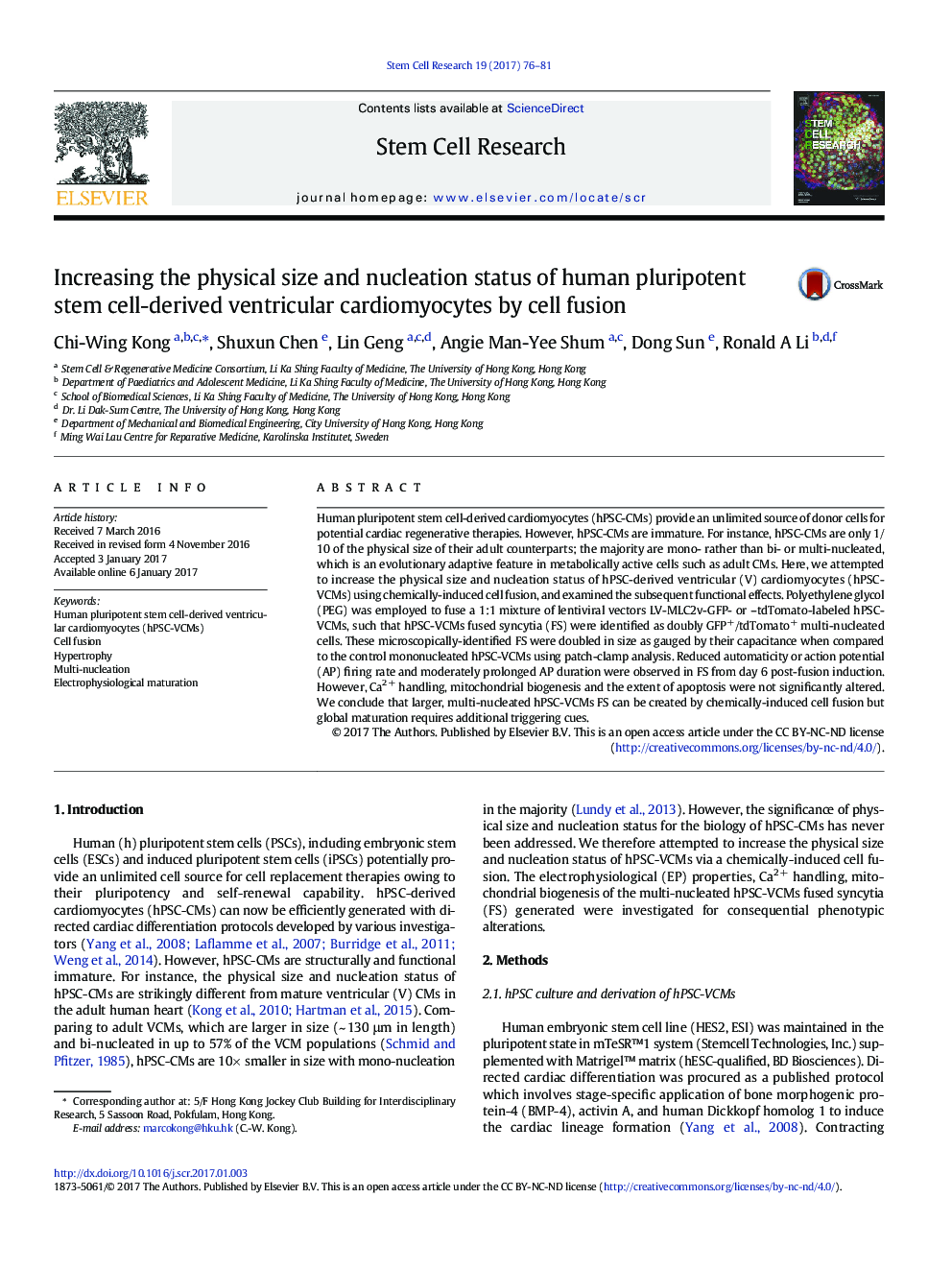| Article ID | Journal | Published Year | Pages | File Type |
|---|---|---|---|---|
| 5522729 | Stem Cell Research | 2017 | 6 Pages |
â¢hPSC-VCMs were PEG-fused to become larger, multi-nucleated fused syncytia (FS).â¢Aspects of facilitated electrophysiological maturation were observed in FS.â¢Other triggering cues, however, will be needed to promote an adult-like phenotype.
Human pluripotent stem cell-derived cardiomyocytes (hPSC-CMs) provide an unlimited source of donor cells for potential cardiac regenerative therapies. However, hPSC-CMs are immature. For instance, hPSC-CMs are only 1/10 of the physical size of their adult counterparts; the majority are mono- rather than bi- or multi-nucleated, which is an evolutionary adaptive feature in metabolically active cells such as adult CMs. Here, we attempted to increase the physical size and nucleation status of hPSC-derived ventricular (V) cardiomyocytes (hPSC-VCMs) using chemically-induced cell fusion, and examined the subsequent functional effects. Polyethylene glycol (PEG) was employed to fuse a 1:1 mixture of lentiviral vectors LV-MLC2v-GFP- or -tdTomato-labeled hPSC-VCMs, such that hPSC-VCMs fused syncytia (FS) were identified as doubly GFP+/tdTomato+ multi-nucleated cells. These microscopically-identified FS were doubled in size as gauged by their capacitance when compared to the control mononucleated hPSC-VCMs using patch-clamp analysis. Reduced automaticity or action potential (AP) firing rate and moderately prolonged AP duration were observed in FS from day 6 post-fusion induction. However, Ca2+ handling, mitochondrial biogenesis and the extent of apoptosis were not significantly altered. We conclude that larger, multi-nucleated hPSC-VCMs FS can be created by chemically-induced cell fusion but global maturation requires additional triggering cues.
